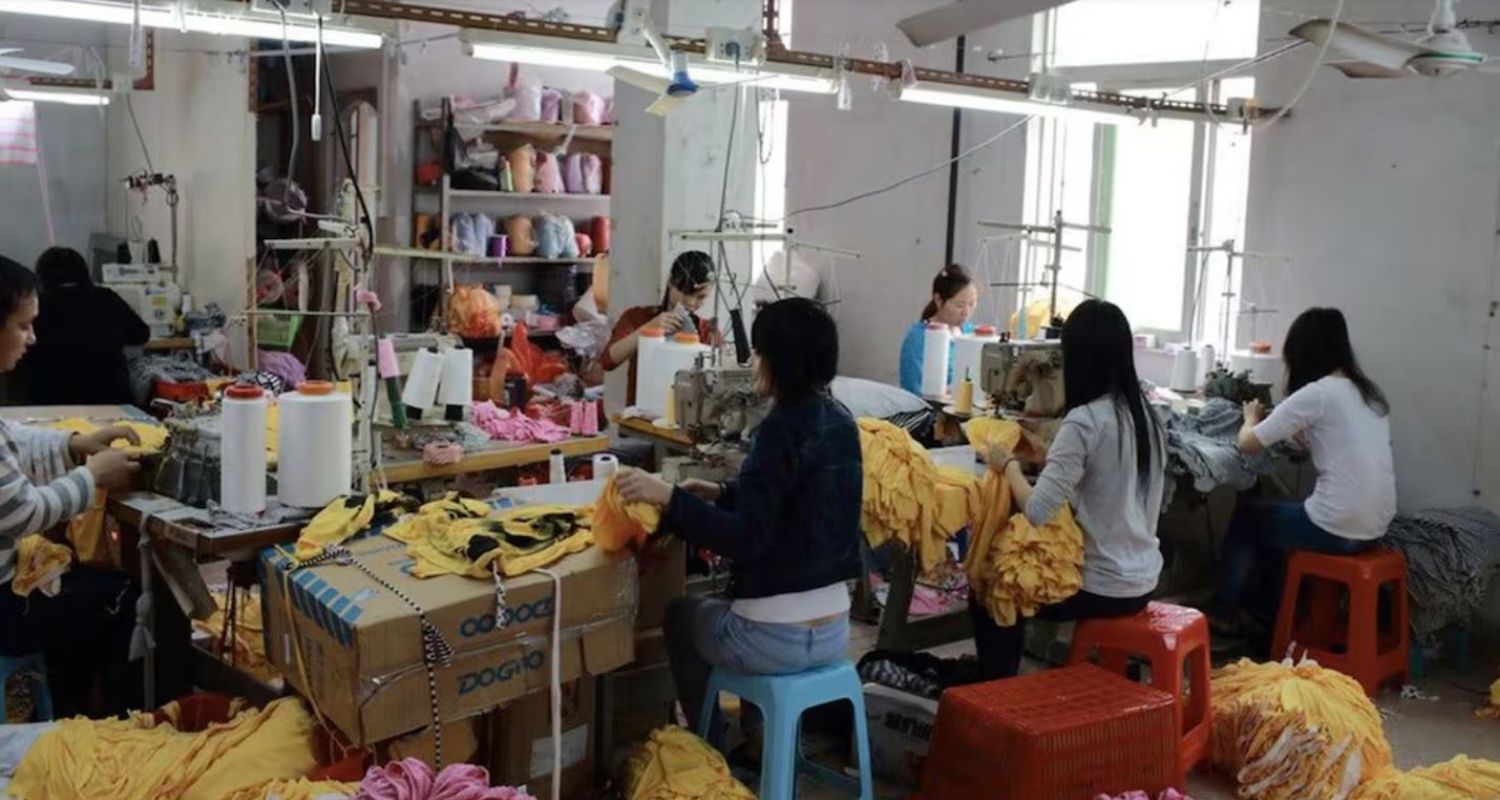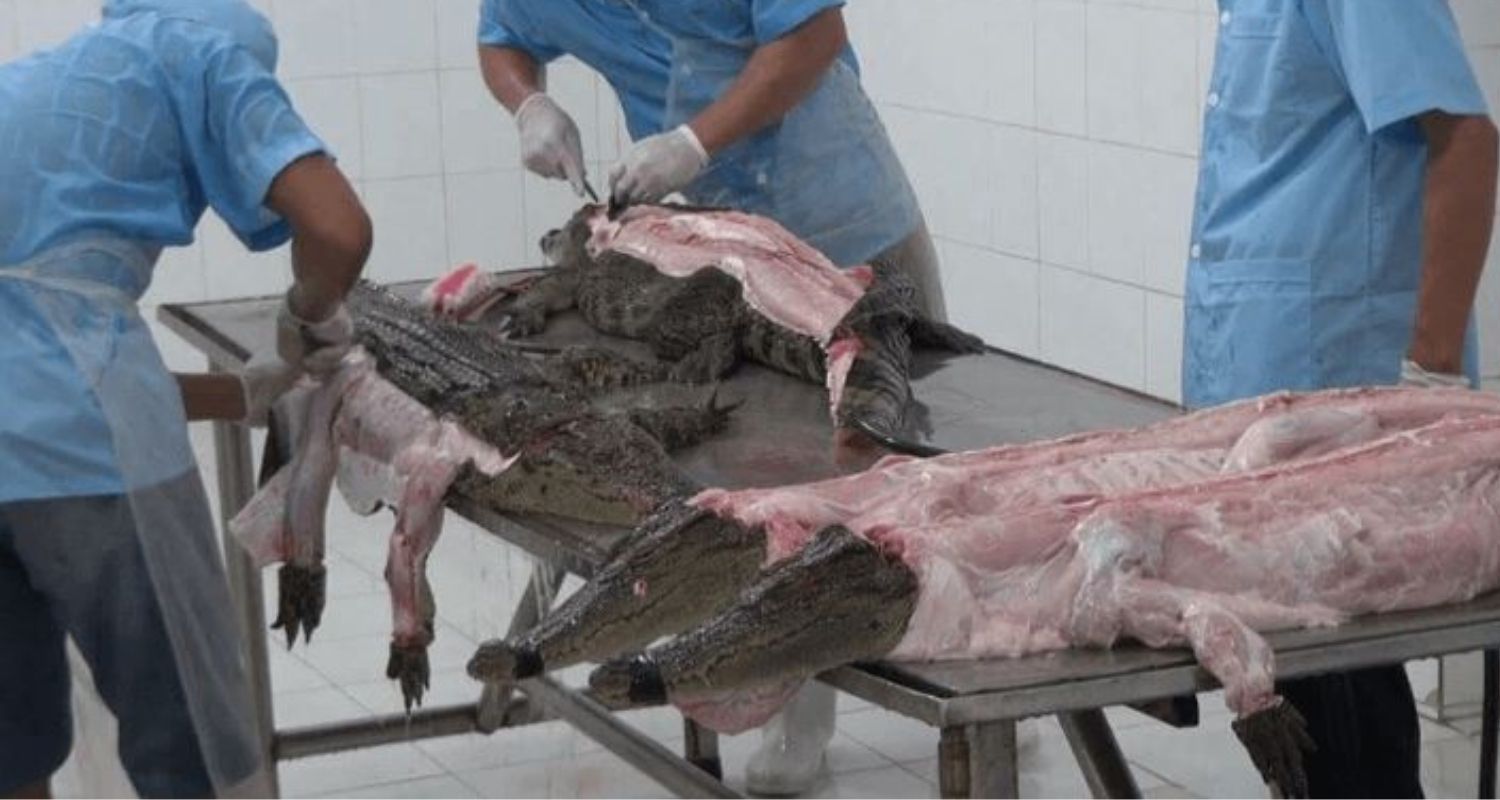Trending:
Italian sweatshops, exploited workers and the ugly side of luxury
With Loro Piana being the latest in a long line of labels accused of worker exploitation, the luxury industry has been hit with an unpredictable PR and image crisis.News Arena Network - Chandigarh - UPDATED: August 17, 2025, 05:58 PM - 2 min read

It takes as many as three crocodiles to make one Hermes bag.
For over half-a-century now, luxury labels have strutted in, riding on the image of craftsmanship and quality, while soft selling the most spoken words of the industry—heritage and legacy. This combination has, over the years, worked well for the industry, resulting in unquestioning consumers, happy to take home cashmere jumpers and leather bags at a price tag running into five digits. However, a few decades ago the first subtle signs of frayed seams began to appear before giving away.
Last month, Loro Piana was placed under a 12-month court administration over alleged worker exploitation. Renowned for its “quiet luxury” aesthetic and sported by the likes of Leonardo DiCaprio and Jeff Bezos, the 100-year-old Italian luxury brand is not the first label to have been under fire on a range of charges—from worker exploitation to working conditions violations.
Last year, a Milan court placed LVMH’s Christian Dior under judicial administration for a year, after an investigation found that two of the brand’s Chinese-owned subcontractors exploited their workers. Although Dior was not held liable for criminal charges, it was held “negligent for failing to take appropriate measures to check actual working conditions or technical capabilities of contracting companies.”
The court observed that inhuman conditions and unethical practices, which the fashion labels turned a blind eye to, were systemic in nature and not a one-off case. A few months apart, a similar judgement in April was pronounced against Giorgio Armani for “culpably failing” to oversee its suppliers and sub-contractors.
As for Loro Piana, worker exploitation in its supply chain threw light on inhuman, sweatshop-like work conditions, with labourers working 90 hours a week for under $5 an hour. The court ruled that the company “culpably failed” to oversee suppliers and prioritised profit.
LVMH, the conglomerate with a bulldog grip on the luxury market, has also had its other labels on the wrong side of law this year. Its crown jewel, Louis Vuitton, last month came under the scanner of the Dutch authorities for suspected money laundering after several LV stores in the Netherlands allegedly accepted around $3.5 million in cash from a Chinese customer. The limit breaches and goes far beyond what is legally allowed.
The luxury is getting quiet, exploitative that is
But Italy, strongly associated with leather goods and cashmere products, has specifically drawn flak for its supply chain system. Throughout the country, there is no dearth of small manufacturers supplying luxury brands with goods that meet “Made in Italy” price tags at “Made in China” prices. Given the industry’s fragmented supply chain, unethical subcontracting is nothing new in the luxury world. The Italian courts have time and again observed that the industry is riddled with a systemic pattern of subcontractors violating fair labour practices. But turning a blind eye to labour exploitation and shrugging off labour scandals is nothing new for brands.
A large majority of the CEOs’ press statements either feign ignorance or deny such practices and focus on immediate image control till the controversy dies down. Which is why, increasingly the Italian law requires that the onus of checking the suppliers rest with the companies outsourcing. Moreover, increased social media vigilance and regulatory scrutiny and debate over the worth of luxury goods has made it difficult for labels to look the other way.
Which is partly why, in the recent months, the authorities in Italy have aggressively begun cracking down on subcontracting practices commonly used throughout the industry. Other labels to have been rapped for doing so include Valentino and handbag company Alviero Martini.
In May this year, fashion industry trade bodies and unions signed an action plan to fight worker exploitation in the supply chain, after prosecutors uncovered widespread abuse. However, this action plan is not legally binding.
Also read: Not easy, but Lagos bans single-use plastics
Last month when reports and details of workers forced to endure 90-hour weeks for less than $5 an hour made it to mainstream and social media, Loro Piana jumped to image control exercises and issued a press statement strongly condemning such practices. “Loro Piana firmly condemns any illegal practices and reaffirms its unwavering commitment to upholding human rights and compliance with all applicable regulations throughout its supply chain.”

But the reports of workers sleeping on factory floors, many of them undocumented immigrants from China, will not be shaken off anytime soon. Perception by discerning consumers is especially important to luxury goods. What goes behind the doors is a part of the lux experience; any association with sweatshop-like premises, exploited labourers, assembly-line production and factory-like conditions don’t bode well on this carefully crafted image centred around the industry’s favourite buzzwords—handmade, quality, legacy and heritage.
What comprises luxury is an ever-evolving concept. Just as the industry has seen a transition from flashy ostentatious logos to quiet aesthetics, it hopefully moves onto ethical business practices, where backend working conditions do not clash with the ideas and image of what luxury truly is.
Wide rage of ‘victims’—workers, environment and animals
For even the most formidable names in fashion, the moral high ground, unfortunately, does not come all-inclusive with sky-high price tags. Exploited labour in the outsourced factories isn’t the only scandal and allegation surrounding the industry. Insiders from the fashion world have long-blown the whistle over the artificial creation of demand-supply, the colossal amounts of environmental damage and deceptively priced articles. According to a 2018 Burberry report, the London-based brand incinerated over $38 million (£28.6 million) worth of unsold products in 2018. As per the company’s annual reports, this figure had steadily increased from £18.8 million in 2016 to £26.9 million in 2017. When questioned by the investors, the brand explained that the items were physically destroyed to prevent them from being sold at discounted rates and thereby affecting its luxury image. Paradoxically, the brand emphasised taking waste management “seriously” and claimed to use special incinerators to generate energy from the process.

After workers and environment, animals have long been the next in line of those suffering at the hands of luxury industry. The skin of exotic animals makes for rare, limited edition pieces and it’s been a happy union for years save for a few whistle-blowers and animal activists.
Hermes—the French fashion house infamous for $20,000 bags and worshipped for the same reason, has been at the centre of many controversies for alleged animal abuse.
In 2023, footage, showing live reptiles being sawed open and left to bleed to death on a farm supplying skins to Hermes, made it to headlines and social media handles alike. As per the investigations and revelations that followed afterwards, the crocodiles were being kept in cramped barren conditions on farms that were owned by Hermes. The reptiles were later mutilated, stabbed with a screwdriver, before being killed and treated for exotic, durable and smooth leather.
Reportedly, it takes as many as three crocodiles to make one Hermes bag. At the time, PETA India director, Poorva Joshipura held a protest outside Hermes boutique in Mumbai. Wearing an alligator-skin costume, lying in a pool of blood, she held the placard “Hermes: Accessory to Murder” in an attempt to call on the French fashion brand to ban the use of alligators, crocodiles and other animals known for their exotic skins. Fortunately, many a fashion houses have stepped forward to include collections free of animal cruelty; from Mulberry to Victoria Beckham, Stella McCartney and Burberry have all banned reptile skins from their leather goods products. Hopefully, that level of empathy extends to the environment, climate and workforce and positive change translates onto other dark facets of luxury fashion houses.
By Manpriya Singh
